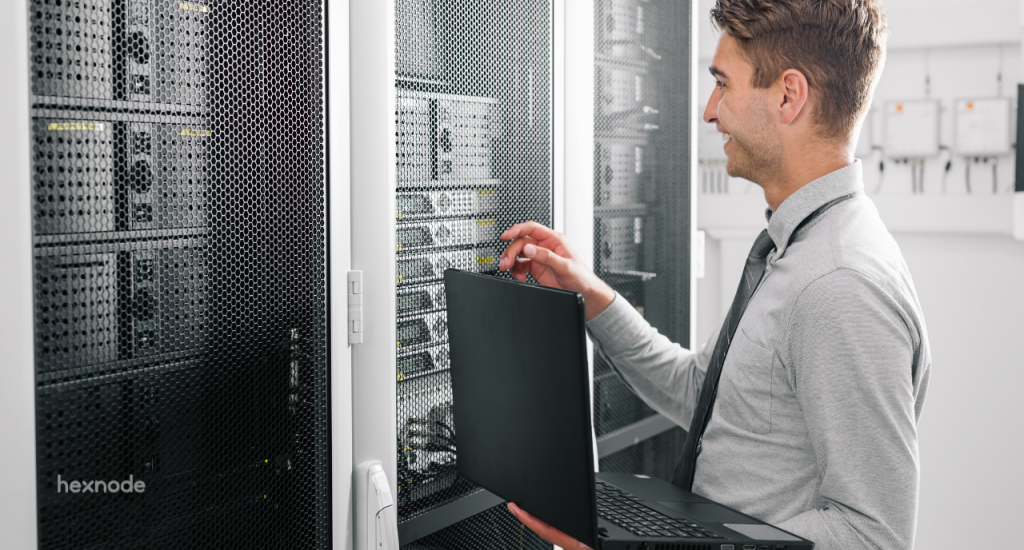Cheers for the new year! Another fine year has gone by and each IT enterprise is gearing up to make the most out of 2022 and get their priorities right.
The past year was pretty bustling for the tech sphere with a host of releases and updates including Android 12, macOS Monterey, and Google announcing pixel 6 built on Google’s in-house silicon chip.
But apart from the big releases, 2021 was a year that saw increasing ransomware attacks and other security threats. This had enterprises frantic, causing them to take extra steps to strengthen their cyber-security.
Cyberattacks in 2021 that locked targets on the high-profile organizations
Going into 2022, the priority of most IT admins would still be fortifying cyber-security in their firms. But that’s not all, there are more things to prioritize if you want to build a healthy and invulnerable working environment for your enterprise.
In this blog, we’ve drawn up a list of what IT admins and enterprises should prioritize entering 2022.
Top priorities for enterprise IT admins going into 2022
Reinforce your security
Hybrid work challenges
The working conditions didn’t see much of a change throughout 2021, with companies sticking to remote work. However, hybrid work model is something that started gaining attention and will find its way to 2022. Most of the companies would prefer this, which gives a better work-life balance to the employees. This obviously calls for bolstering security standards.
IT admins should make sure that the company resources are accessible for all, in a secure and encrypted channel. If done carelessly, attackers could jump in and get access to the resources.
Plus, IT admins should also make data backup a priority in these working conditions. Employee data should be securely backed up in the cloud to retrieve in case of any data breach or corruption.
The risk with IoT expansion
One of the most overlooked, yet highly critical security concerns coming with the work-from-home scenario will be the connected devices or IoT. IoT consists of devices other than personal computers or laptops, like smartwatches, TVs, etc. connected via the internet sharing a common network. This means the attackers have more access points to access the network, which is connected to your enterprise devices.
Cloud security
Again, the shift to remote working has increased the dependency on cloud. This is only going to grow in 2022 with more company data and resources being shifted to the cloud. Enterprises around the world are actually planning to change their whole business to cloud-based. With this, cloud misconfiguration is going to be the biggest villain.
Cloud misconfiguration is the most common threat with the cloud architecture. This is mainly caused by human errors and most companies won’t even notice they have a misconfiguration until a breach happens.
User authentication and the importance of Zero Trust
As the employees will be accessing enterprise resources and data from their personal networks, strong authentication methods will have to be enforced.
Zero Trust architecture is something that every enterprise should adopt and prioritize. Though Zero Touch gained significance in 2021, some companies are yet to effectuate it. Zero Trust follows the simple rule of trust no one. In Zero Trust, every user and application will have to constantly authenticate every time, as no one is trusted inherently.
Artificial intelligence in cyber-security
Without a question, this should be a top priority for all enterprises and IT admins. The need for AI in cyber-security is getting graver year by year. As the number of cyber threats keeps increasing, it’s becoming harder for humans alone to handle it. That’s where AI jumps in. The predictive capability of AI helps automate threat detection and mitigation. Also, large amounts of data can be processed and scanned quickly.
Enterprise mobility and the need for UEM
The importance of employing a UEM (Unified Endpoint Management) can’t be stressed enough. Particularly in the last couple of years, UEM became a buzzword among enterprises. And the need for securely managing your enterprise devices just keeps growing.
A UEM solution provides a central point to manage and control all your endpoint devices. These endpoint devices could be laptops, desktops, mobile phones, tablets, wearables, smart TVs, digital signage boards, and more. UEM enables enterprises or SMBs to apply restrictions and policies to all their devices from a single location, and automate them.

Featured resource
Why Hexnode UEM?
Hexnode's comprehensive set of features is the right fit for modern-day enterprise mobility needs. Download the brochure to learn more!
Download pdfThe privacy urgency
The amount of data collected and used across the internet keeps growing. With this, privacy rules and regulations also keep growing at the same pace. This includes legal policies like GDPR, HIPAA, and CCPA. In 2022, this is expected to increase, especially with more states introducing their own privacy rules. Enterprises should focus on maintaining their compliance with regulatory guidelines, to free themselves from the risk of fines and maintain consumer trust.
To conclude
With the effect of the pandemic still prevailing in the IT domain, enterprises are prepared to take on the year 2022 with everything assimilated from 2021. However, with enterprises on the verge of moving completely to cloud-based infrastructure and most of them preferring the hybrid work model, there are some things to keep in mind.
That said, in this blog, we saw some of IT admins’ top priorities that would help their enterprises tackle previously overlooked vulnerabilities.
Advanced device management features with easy-to-use interface; Experience seamless endpoint management with HexnodeManage your enterprise-devices effortlessly





